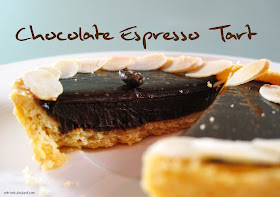
“When I grow up, I’m going to Bovine University” – Ralph Wiggum
Thankfully, I’m not eligible for Bovine University, but I did attend a masterclass with Christopher Whitehead, head chef of Mad Cow restaurant.
Part of Merivale’s Winter Feasts promotion, this 1 ½ hour class took us behind the scenes of the ivy’s Mad Cow New York-style grill eatery. That meant meat, meat and more meat!
Mad Cow is basically a steak restaurant, and it focuses on different cuts of beef, cooked to perfection. Chef Christopher Whitehead has worked in the restaurant business for 20 years, and has been with Mad Cow since it opened 2 years ago. Apart from being a top chef, he is obviously extremely knowledgeable on the beef products used at his restaurant.
I should also mention that Glenda, one of the managers at Mad Cow, was also in attendance, and she is also enthusiastic and well-informed on the produce and the methods of the cooking process (as well as keeping everyone happy and topped up with wine during the masterclass).
We were introduced to the various breeds of cattle, including Wagyu, and also to the Australian producers of the meat used at Mad Cow, including Rangers Valley and David Blackmore. A variety of grass-fed and grain-fed meat is used, with the flavour of each being quite different. The length of time that the cows are fed for also influences the flavour and texture of the meat, with grain-feeding times ranging from 150 days up to 600+ days!
We were also shown two cuts of meat that had been dry-aged. The dry-ageing process is interesting because it is also time-intensive (special drying room, someone turning the meat regularly), and this translate to a higher price for dry-aged meat.
The cuts of meat we tried included:
- dry-aged, grass-fed, rib eye on the bone (400g)
- dry-aged, grain-fed, T-bone (massive 650g)
- David Blackmore grain-fed, Wagyu skirt steak (marble score 9+)
- Rangers Valley 400-day, grain-fed, Wagyu sirloin (marble score 7+)
- Grain-fed, eye fillet (200g)
- Black Angus minute steak (very thin, cooked very quickly)
At Mad Cow, they use a special American broiler to cook the thicker cuts, and this contraption, which has a flame over the top of the meat, can reach up to 700 °C. The masterclass was held in the kitchen of one of the ivy’s function rooms which doesn’t have a broiler, so the chef used a couple of pans and the chargrill plate to cook the meat. And because a very high heat is necessary to achieve that all-important crust on the meat, the flames were turned up HIGH.
Tip: The meat should be at room temperature, and seasoned generously just before cooking; oil and butter can be spread on the meat beforehand as well.
Gosh, it smelt good! But thank goodness for the industrial exhaust fans in the kitchen there, I can imagine the smoke alarms going off big time if we tried it at home (barbequeing outside is probably a good idea).
Mad Cow prepares all their sauces in-house, and the chef also prepared some sauces for us during the class: Mad Cow’s own chimichurri and horseradish cream. Interesting fact: they tearfully grate their own fresh horseradish every week and store it in vacuum-sealed bags to make the horseradish cream. The chimichurri was a fragrant mix of roasted capsicum, Spanish onion, olive and grapeseed oils, parsley and oregano, with lime juice added just before serving.
Verdict on the meats: We were told how the ‘tougher’ cuts of meat, such as Wagyu skirt, have more flavour than the tender cuts such as eye fillet. I’d heard this before, but didn’t realise how delicious the skirt was – the marbling of 9+ may have had something to do with it. The flavour was incredible, and all the steaks were cooked to a perfect medium-rare. Chef did say that the restaurant is happy to cook whatever the customer wants, so if you must have well-done, then that’s fine.
Tip: The meat should be rested (uncovered) in a warm place for the same amount of time as it was cooked for.
 All up, it was a fun, informative night. It also means that I won’t automatically order the eye fillet when dining out, nor will I necessarily get the scotch fillet when I buy meat for a barbeque.
All up, it was a fun, informative night. It also means that I won’t automatically order the eye fillet when dining out, nor will I necessarily get the scotch fillet when I buy meat for a barbeque.At the time of writing, the Winter Feast masterclasses for August are not yet available on the Merivale website, but if you see one for Mad Cow, I recommend you check it out if you love your cow.
Mad Cow is in the ivy complex, at:
Level 1, 330 George Street, Sydney 2000
Ph: 9240 3000
















































